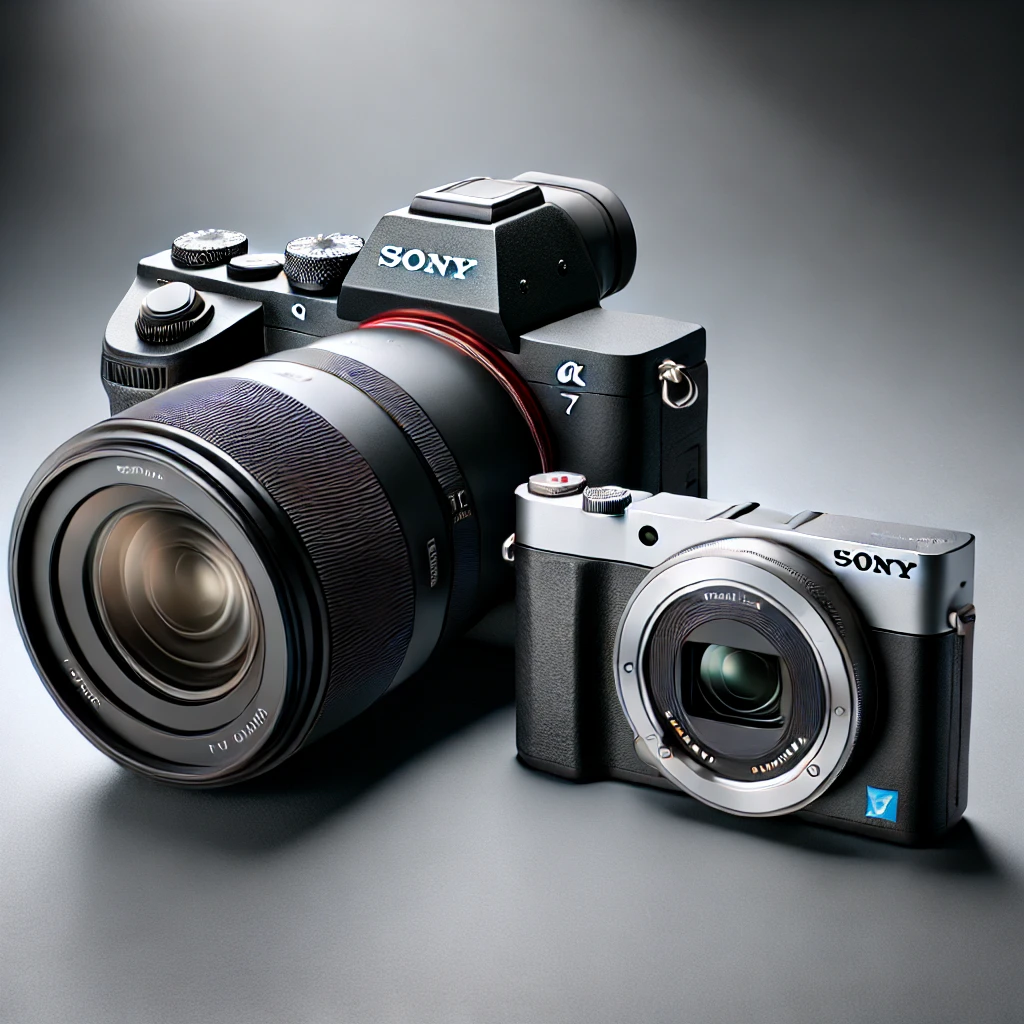Choosing the right camera can be overwhelming, especially with so many options available. Two popular types of cameras are mirrorless cameras and compact cameras, each catering to different photography needs. Here’s a comprehensive comparison to help you decide, along with recommendations for the best camera in each category.
1. What Are Mirrorless Cameras?
Mirrorless cameras are interchangeable lens cameras that lack the mirror mechanism found in DSLR cameras. Instead, they use electronic viewfinders or rely on the camera’s screen to compose shots.
Advantages:
- Interchangeable Lenses: Offers flexibility for different shooting scenarios.
- Superior Image Quality: Larger sensors provide better resolution, low-light performance, and depth of field control.
- Lightweight and Compact: Smaller than DSLRs, ideal for travel and portability.
- Advanced Features: Offers features like 4K video recording, high-speed autofocus, and superior manual controls.
Disadvantages:
- Cost: Higher initial investment due to the camera and additional lenses.
- Battery Life: Shorter battery life compared to DSLRs and some compact cameras.
- Learning Curve: May be overwhelming for beginners.
Best Mirrorless Camera of 2024: Sony Alpha 7 IV
The Sony Alpha 7 IV combines a 33MP full-frame sensor with advanced autofocus and excellent video capabilities, making it ideal for both photography and videography enthusiasts. Its versatility and high-end performance make it a standout choice.
2. What Are Compact Cameras?
Compact cameras, also known as point-and-shoot cameras, are designed for simplicity and convenience. They are typically small and feature a fixed lens.
Advantages:
- Portability: Extremely lightweight and pocket-friendly.
- Ease of Use: Automatic settings make it simple for beginners.
- Affordable: Typically less expensive than mirrorless or DSLR cameras.
- All-in-One Lens: No need to buy additional lenses.
Disadvantages:
- Limited Manual Control: Often lacks the advanced settings found in mirrorless cameras.
- Fixed Lens: Restricted to the built-in lens, limiting versatility.
- Smaller Sensor: Produces lower image quality, especially in low light.
Best Compact Camera of 2024: Sony Cyber-shot RX100 VII
The Sony Cyber-shot RX100 VII is a compact powerhouse featuring a 1-inch sensor, 24-200mm zoom lens, and lightning-fast autofocus. It’s perfect for travelers and casual photographers who want high-quality photos without the complexity of interchangeable lenses.
Key Differences Between Mirrorless and Compact Cameras
| Feature | Mirrorless Cameras | Compact Cameras |
|---|---|---|
| Size | Compact, but larger than compacts | Extremely portable |
| Lens Options | Interchangeable lenses | Fixed lens |
| Image Quality | Excellent, thanks to larger sensors | Good for casual photography |
| Ease of Use | Advanced settings for enthusiasts | Beginner-friendly |
| Battery Life | Shorter than compact cameras | Longer due to simpler mechanics |
| Price | Higher | Affordable |
Which Should You Choose?
- Go for a Mirrorless Camera if:
- You’re a photography enthusiast or professional.
- You value image quality and flexibility with lenses.
- You’re willing to invest in accessories and learn advanced features.
- Choose a Compact Camera if:
- You want a lightweight and portable option.
- You’re a beginner or casual photographer.
- You prefer an all-in-one solution without the hassle of changing lenses.
Final Thoughts
Both mirrorless and compact cameras have their strengths, and the choice ultimately depends on your photography needs. The Sony Alpha 7 IV stands out as the best mirrorless option for its exceptional performance, while the Sony Cyber-shot RX100 VII leads the compact category with its versatility and portability.
Whichever you choose, both are excellent tools for capturing memories in stunning detail!





